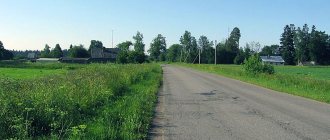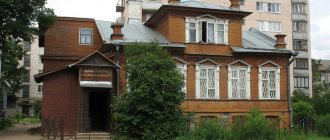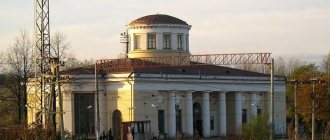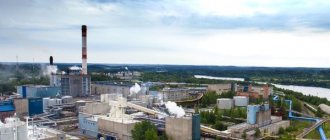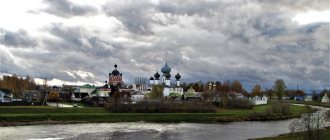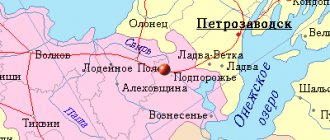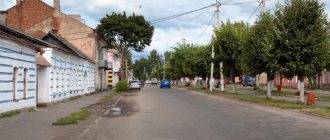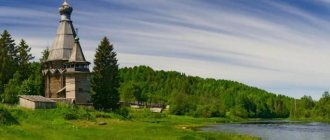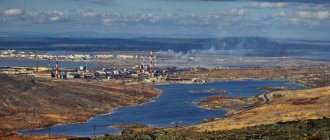Population and administrative structure
The population of the Priozersky district is 62 thousand people. The last 8 years have been approximately at the same level, the minimum in the modern history of Russia was recorded in 2009 - 59.4 thousand people, and the maximum in 2013 - 63.1 thousand. Indicators before 2006 can be ignored, since the population of the city of Priozersk was not taken into account. 37% of the population live in urban areas, which is significantly lower than the average urbanization rate for the Leningrad region.
It consists of the Kuznechnoye municipality (2 settlements and 4,300 population), the Priozersk urban settlement (4 settlements and 18.9 thousand population) and twelve rural settlements. All of them include a total of 103 settlements.
Table. Rural settlements of the Priozersky district
| Name | Center | Population | Settlements included |
| Gromovskoye | Gromovo village | 2500 | 12 |
| Zaporozhye | Zaporizhskoe village | 2780 | 7 |
| Krasnozernoe | Village Krasnozernoye | 1120 | 5 |
| Larionovskoe | Village Larionovo | 2850 | 12 |
| Melnikovskoe | Melnikovo village | 2000 | 8 |
| Michurinskoe | Michurinskoe village | 1850 | 2 |
| Petrovskoe | Petrovskoe village | 1820 | 6 |
| Plodovskoe | Plodovoye village | 2800 | 12 |
| Razdolevskoe | Village Razdolie | 1650 | 5 |
| Romashkinskoe | Village of Romashki | 7400 | 10 |
| Sevastyanovskoe | Sevast'yanovo village | 750 | 9 |
| Sosnovskoe | Sosnovo village | 11360 | 9 |
Content
- 1 Etymology
- 2 History 2.1 From antiquity to the 15th century
- 2.2 Novgorod land
- 2.3 Under Swedish rule (1580–1595)
- 2.4 Under Swedish rule (1617–1721)
- 2.5 As part of the Russian Empire 2.5.1 Grand Duchy of Finland (1811-1917)
- 6.1 Industry
- 8.1 Television
Geography, relief and climate
The area of the Priozersky district is 3598 square kilometers. In the east it is washed by the waters of Lake Ladoga, the length of the coast is 85 kilometers. The Ladoga Skerries region begins on the northern border. It borders with the Republic of Karelia, as well as with the Vyborg and Vsevolozhsk districts of the Leningrad region.
The Priozersky district is characterized by extremely interesting topography; perhaps, in this sense, it is one of the most attractive areas in the Leningrad region. This is explained by its location on the Karelian Isthmus and it was here that glaciers had the greatest impact on the landscape.
The terrain is generally flat, although there are some hills. The highest point of the Priozersky district is 86 meters. There are many granite outcrops, which give the area a special beauty. Most of the territory is covered with forest, but in some places there are also swamps.
In terms of water resources, the Priozersky district is the richest in the Leningrad region. The central water artery is the Vuoksa River. There are many lakes, we will mention only the largest: Otradnoye, Lake Vuoksa, Sukhodolskoye, Komsomolskoye, Otradnoye, Balakhanovskoye. There are also many small rivers, most of which are tributaries of the Vuoksa.
Despite the abundance of water in the Priozersky region, the percentage of swamps is relatively low - only 3.5% of the territory is occupied by swamps. For the most part, they are located in river valleys and are not very deep, as they often lie on granite slabs.
The climate is temperate continental, here it is greatly influenced by air masses from the Atlantic Ocean (as in the entire Leningrad region). Winters in the Priozersky region are mostly mild, summers are moderately warm, and autumn is warmer than spring. The weather in the Priozersky region is famous for its changeability.
Priozerskaya church
The Finnish church built in 1930 is in an abandoned state. After the war, the NKVD department and, as usual, the House of Culture were located here.
In 2001, a disco with a bar was placed in the once Lutheran church, and in 2002 there was a severe fire.
They want to restore the building, I hope this will happen soon.
An interesting legacy of the Finnish period remains on the outskirts of Priozersk. This is the former Waldhof Ab plant:
The plant was nationalized after the war and became the Priozersk Pulp and Paper Mill. The plant was closed in 1986 due to environmental threats.
I decided to complete my visit to Priozersk by visiting the shores of Lake Ladoga. The road goes past the plant, residential buildings and then turns into a dirt road past the forest.
The view near the shore is so-so, but there could be a wonderful walking area - the city is very close.
Economics and transport
The economy of the Priozersk region can be called diverse, although wood processing dominates in manufacturing with a share of about 70%. It is worth noting that not only timber is harvested here, but also lumber and other products are produced. In total, manufacturing accounts for almost 50%, and agriculture – 28%. The remaining 22 percent of the region's economy comes from small businesses, services, food, tourism, etc.
In general, the economic situation in the Priozersky region can be considered prosperous. The registered unemployment rate is at 0.3%. Average salaries are quite consistent with the regional average.
The main transport artery of the region is the A121 Sortavala highway. There is a railway line that goes from St. Petersburg and at Losev it is divided into two: to Sortavala and to Kamennogorsk (Vyborg district).
Economics[ | ]
Industry[ | ]
Highways and railways pass through the city, connecting it with the cities of the region. The city has developed industry. The largest enterprises were the Priozersky woodworking plant.
Trade and services[ | ]
| The section lacks links to sources. Information must be verifiable or it may be deleted. You can edit the article to add links to authoritative sources. This mark is set on April 5, 2022 . |
- Pyaterochka supermarket chain
- Chain of supermarkets "Magnit"
- Communication salon "Euroset"
- Megafon customer service office
- MTS subscriber service office
- Beeline subscriber service office
- Tele2 subscriber service office
- Chain of pharmacies "Nevis"
- Furniture
- Chain of stores "Magnit Cosmetic Market"
- Branches of Sberbank of the Russian Federation
- Rosselkhozbank branch
- StroyMag
- "Vimos" (household and construction goods)
Attractions
There are quite a lot of interesting sights in the Priozersky district. The most visited is the Korela fortress in the city of Priozersk, which also has a local history museum. Other historical and architectural attractions include:
- Church of All Russian Saints in the village of Sosnovo;
- Cathedral of the Nativity of the Blessed Virgin Mary (Priozersk);
- Lutheran Church;
- Tank IS-3.
In addition, there are many natural attractions or simply interesting and beautiful places. In particular, it is worth mentioning Lake Yastrebinoye, which many call one of the most beautiful in the Leningrad region.
Priozersk railway station
Another must-see attraction of Priozersk is the miraculously preserved wooden station building, built in 1916. The architecture is unusual - compare at least with the photo of the lost Sortavala station building. After restoration in 2008, the building was restored to its historical appearance.
Inside, the impression is slightly spoiled by typical plastic doors and benches, but overall it’s very beautiful:
Electric train ET2EM-002 “Vuoksa” at Priozersk station:
Another representative of Priozersk buses is the rather rickety LiAZ-5256.23-01:
Residential buildings opposite the station:
Graffiti in the courtyards:
There are many interesting wooden houses in Priozersk:
Recreation and fishing
The Priozersky district will be of interest to lovers of various types of tourism, both those who like to relax in nature (ecotourism) and those who are interested in visiting museums and seeing architectural and historical monuments. People often come here to relax with tents, go hiking, and the Vuoksa River and the lakes that are part of its system are often visited by water tourists.
The Priozersky district has a developed tourism infrastructure; there are hotels, guest houses and recreation centers. There are entire complexes that offer entertainment for every taste. In terms of the number of tourist infrastructure facilities, the Priozersky district is definitely one of the leaders in the Leningrad region.
The proximity to St. Petersburg also plays a role, from where people often come here on weekends. In addition, through Priozersk they get to Konevets Island. In general, the Priozersky district can be considered one of the most interesting in the region from the point of view of any tourist.
Ladoga lake
At the end of the post there are a few photos of Lake Ladoga.
Still, it’s worth driving here, even if it’s on a bad dirt road, the scenery here is magnificent:

